TO
1 - 25 of 10
| Creator | Title | Description | Subject | Date | ||
|---|---|---|---|---|---|---|
| 1 |
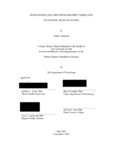 |
Anderson, Ashley | Intracranial electrocorticographic correlates of intrinsic brain neetworks | Analyzing patterns of intracranial electroencephalographic (EEG) recordings can provide insight into how temporal and spatial components of brain activity are related on a trial-by-trial basis. Research on fMRI resting state networks has clarified the role of the default mode network (DMN) in intern... | 2021 | |
| 2 |
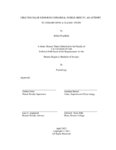 |
Woolford, Dallin | Creating false memories using real-world objects: an attempt to expand upon a classic study | This study aimed to investigate the relationship between different types of stimulus presentation and their effects on both memory confidence and memory accuracy through researching the phenomenon known as false memories. Investigating ways to raise memory confidence and to still retain accurate mem... | 2023 | |
| 3 |
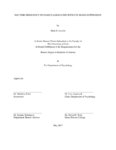 |
Lavelle, Mark E. | Eeg time-Frequency Dynamics Associated with eye Blink Suppession | The majority of individuals with Tourette's Syndrome (TS) experience fluctuating, involuntary sensations which build in intensity until tics are performed. These sensations, termed premonitory urges (PUs), are described both as general states of unease and somatotopically specific sensations like he... | 2017 | |
| 4 |
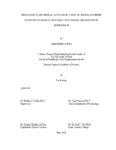 |
Matyi, Joshua Matthew | Intelligence and neural activation : a test of the relationship between the neural efficiency hypothesis and repetition suppression | The Neural Efficiency Hypothesis (NEH) states that individuals with higher measured intelligence exhibit less neural activation on relatively simple tasks compared to those with lower intelligence (Haier et al., 1988). Furthermore, this phenomenon may interact with repetition suppression, or the red... | Intelligence levels - Physiological aspects; Neural networks (Neurobiology) | 2014-05 |
| 5 |
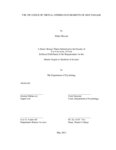 |
Macura, Zeljka | The influence of virtual others on judgments of self passage | Individuals perceive their ability to act in the environment, termed affordances, by evaluating the relationship between their own capabilities and dimensions and the properties of the environmental objects and surfaces that surround them (Gibson, 1979/1986, Richardson, Marsh & Baron, 2007; Ishak, A... | Cognitive psychology; Visual perception; Other (Philosophy) | 2013-05 |
| 6 |
 |
Schryver, Hannah M. | EEG and cognitive correlates of elementary task performance | Studying human information processing allows researchers to better understand the operations of the human brain. While a large body of research has used reaction times and cognitive correlates to quantify information processing, electrophysiological correlates improve knowledge of cortical activity.... | Performance -- Measurement; Cognitive neuroscience; Electroencephalography | 2015-05 |
| 7 |
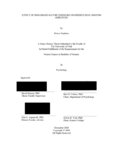 |
Stephens, Mason | Effect of prolonged nature exposure on mindfulness and P300 Amplitude | This study utilized a quasi-experimental, within-subjects design to explore the effects of a 5-day nature immersion on perceived mindfulness, behavioral performance, and brain wave activity using Electroencephalography (EEG) to assess the amplitude of the P3a and P3b Event-Related Brain Potentials. ... | 2020 | |
| 8 |
 |
Gardner, Kelly | Individual differences in inhibition and emotion | The objective of this study was to examine if negative emotion can play an influential role on inhibition through attentional control. Higher levels of working memory capacity (WMC) have been correlated with faster inhibition times attributed to greater tolerance of automatic processes and better... | Emotion | 2014-12 |
| 9 |
 |
Foott, Bettymaya | Light pollution hazards within ecosystems and mitigation strategies for the future | Light Pollution is a phenomenon caused by poor lighting design, and is increasing globally. Only recently are scientists beginning to fully understand how light pollution affects humans and the environment. Birds, which play an important role in our ecosystem, are vulnerable to light pollution effec... | Light pollution Lighting -- Environmental aspects | 2015-05 |
| 10 |
 |
Erickson, Mariah | False hearing and the N400: the effects of linguistic context on language perception | False hearing is a phenomenon where one mishears what has been said to them based on linguistic contextual cues used to make a prediction (Rogers et al., 2012). The incorrect hearing usually has similar phonemic properties to other likely words and syntactic relation to what was said prior. Our stud... | 2021 |
1 - 25 of 10
